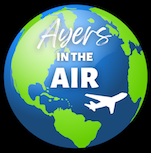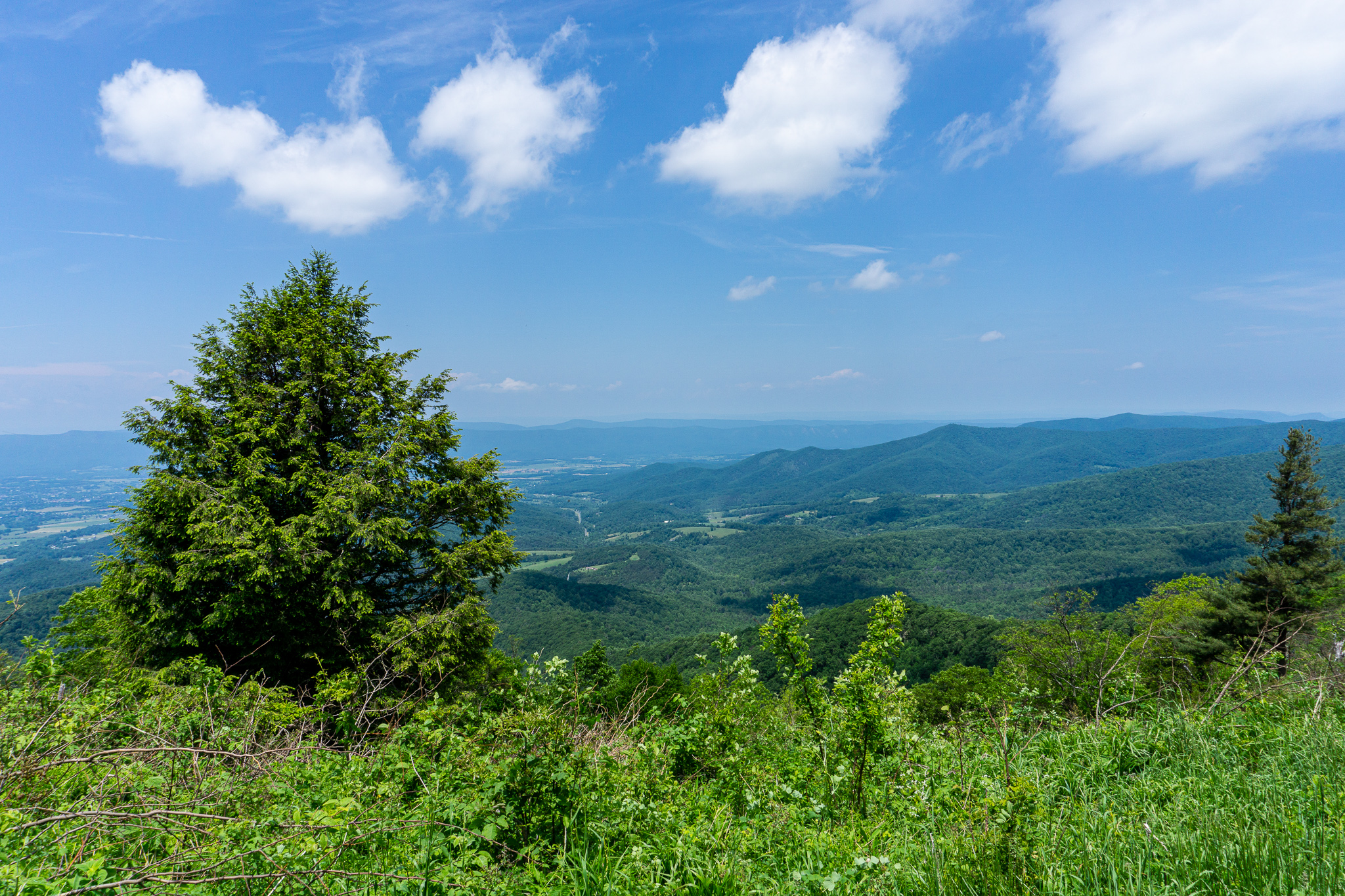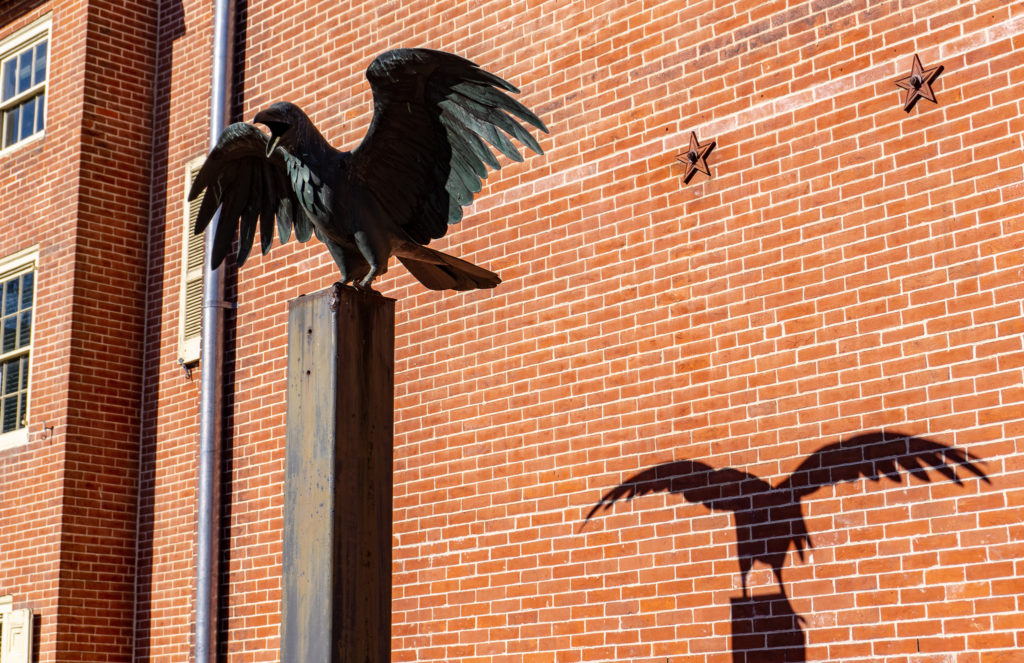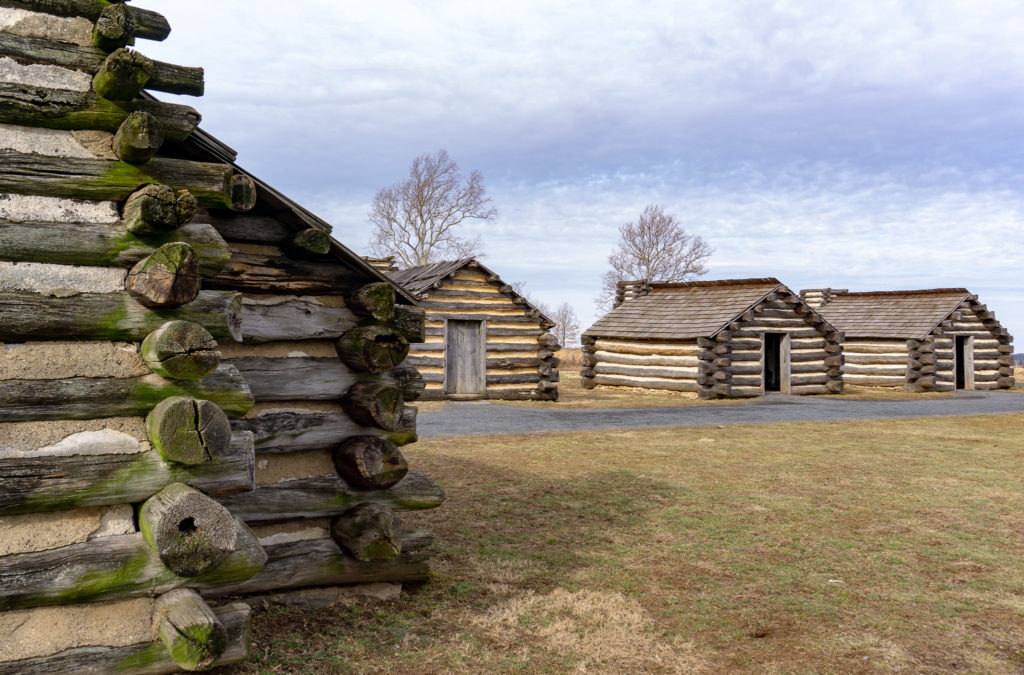Occupying over 311 square miles of north-central Virginia, Shenandoah National Park stretches along the Blue Ridge Mountains — part of the Appalachian Mountain range. The national park’s most famous feature is the 105-mile long Skyline Drive, a road which runs the entire length of the park.
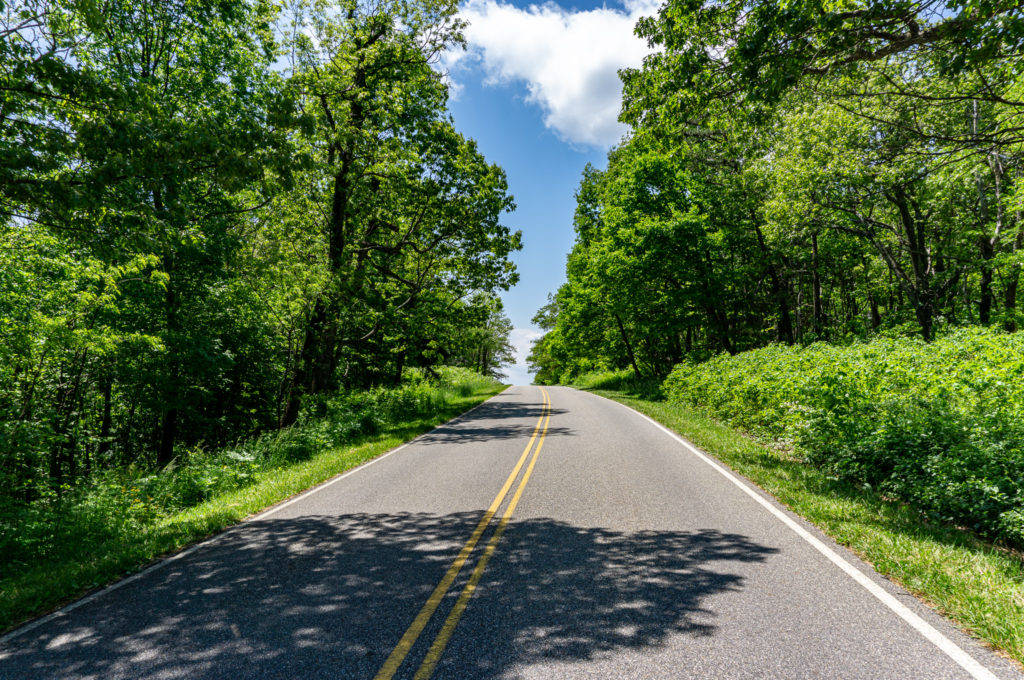
Created in 1935, Shenandoah National Park is one of the National Park Service sites in Virginia and one of the 419 official units of the National Park Service found throughout the United States of America.
Shenandoah is one of the most popular and accessible national parks in the eastern United States. As a result, the park received over 1.25 million visitors in 2018.
Table of Contents
Maps
Location of Shenandoah National Park in the United States

Shenandoah National Park
Location of Shenandoah National Park in Virginia

Shenandoah National Park, Virginia
History of Shenandoah National Park
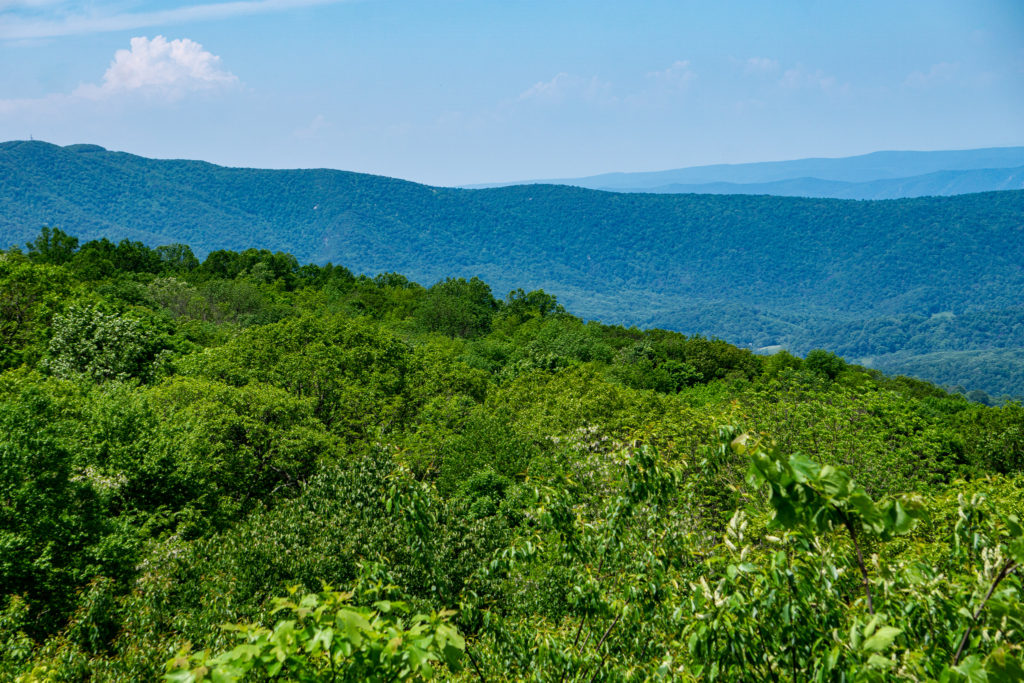
During the 1930s, all of America’s national parks were in the western part of the country. The only exception to this was Acadia National Park in Maine, which was created in 1919 — making it the first national park in the eastern United States. This imbalance of national parks was ironic, considering that the vast majority of the American population lived in the eastern states.
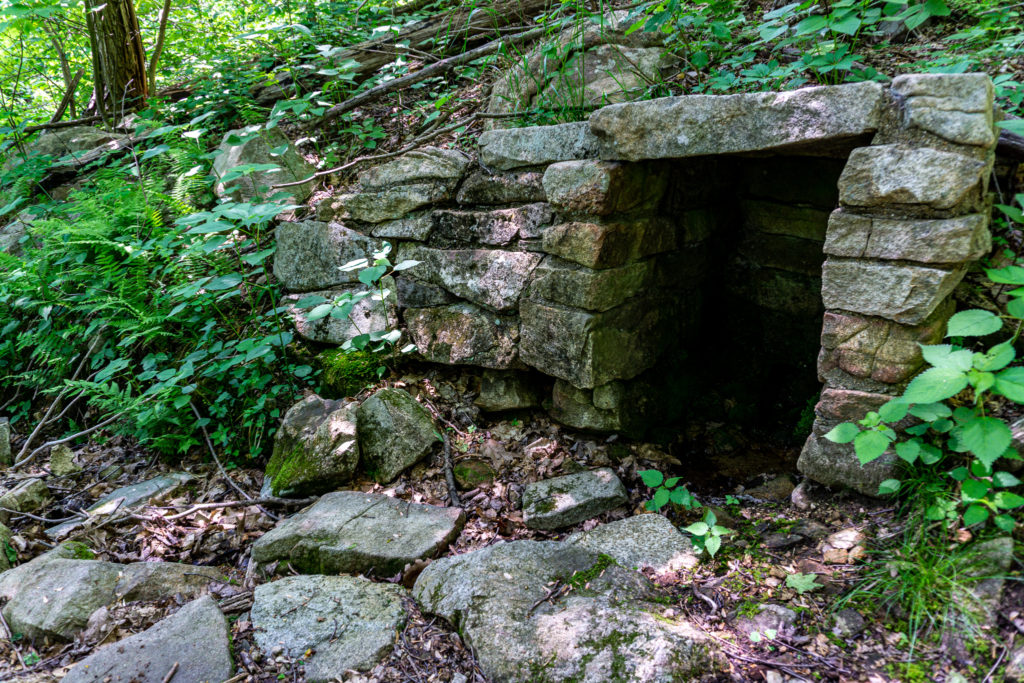
Permission to acquire land for a national park in the Shenandoah Valley was granted by Congress and President Calvin Coolidge in 1925. After a decade of financial and political hurdles, and land acquisition through eminent domain, Shenandoah National Park was finally established on December 26, 1935. President Franklin D. Roosevelt would formally open the park in July of the following year.
What to See and Do in Shenandoah National Park
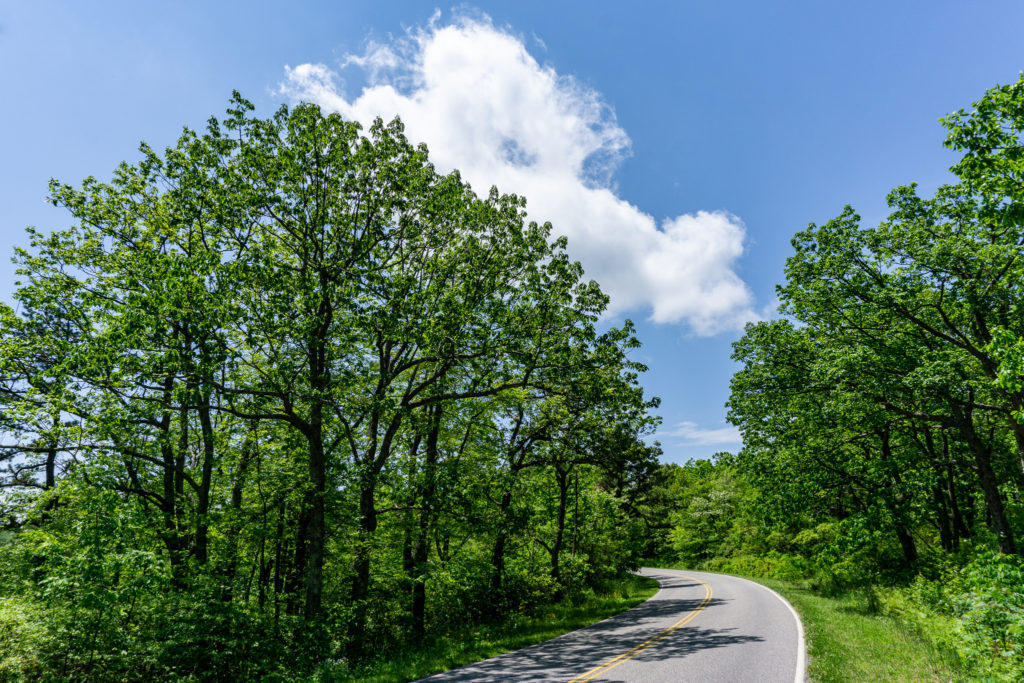
Skyline Drive
Following the entire length of Shenandoah National Park, Skyline Drive is a two-lane road complete with 75 different overlooks that offer breathtaking views of the Shenandoah Valley and the Piedmont (to the west and east, respectively.) Skyline Drive is the main highway servicing this US National Park Service Site. There are four different access points to Skyline Drive within the park, each charging a park entrance fee.
Hiking

Shenandoah National Park boasts over 500 miles of hiking trails, including 101 miles of perhaps the most famous hiking trail in the United States – the Appalachian National Scenic Trail. Even though a portion of the Appalachian Trail is located with the boundaries of Shenandoah National Park, it is technically a separate unit of the US National Park Service. This trail stretches from Maine all the way to Georgia. As a result, some ambitious hikers dedicate half a year or more to walk it in its entirety, all in one shot!
In addition to this portion of the Appalachian National Scenic Trail, a more comprehensive guide to the trails and suggested hikes can be found on the National Park Service’s official page for the park by clicking here.
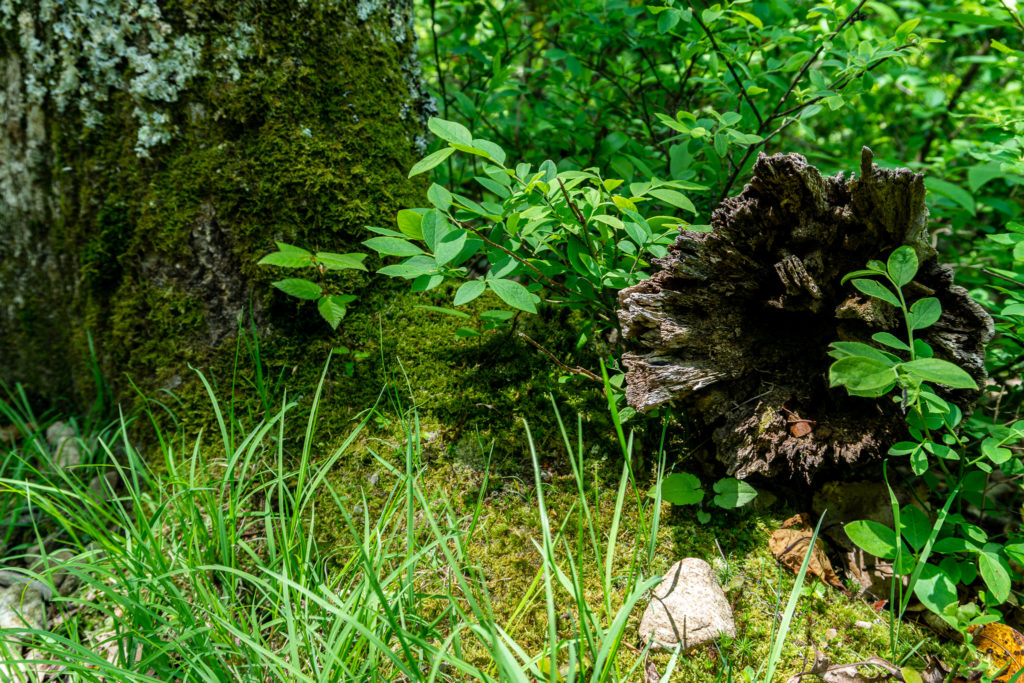
If setting out on a hike in Shenandoah National Park, be sure to always let someone know when you are going and where you’ll be. If possible, always go with a friend. Also be sure to have adequate water and food, as well as the proper clothing and gear (map, compass, water filter, etc.) for the excursion. As exciting as it may sound, you don’t want to get lost in the woods of Shenandoah during a severe thunderstorm and find yourself severely unprepared. Trust me… I know from experience!
Fishing
There are over 70 mountain streams and countless tributaries located in Shenandoah National Park, so those wishing to fish in its waters will have ample opportunities during their visit. However, fishing regulations in Shenandoah are regulated and strictly enforced. Therefore, it is important to stay up to date with the current rules and requirements for fishing licenses. Visit the National Park Service’s official page to view their guide for recreational fishing within Shenandoah National Park.
Up to 39 different species of fish call this national park home. Some of the more common species found in the park’s waters include brook trout, rainbow trout, brown trout and bluehead chub, for instance.
Bicycling
Shenandoah National Park is an excellent place to set out for a long day on your bicycle. Bicycling is not permitted off-road or on the trails, so be sure to keep your bike on Skyline Drive and other paved areas in the park.
For the safety of bicyclists and other visitors alike, all bicycle operators are required to have a white light or reflector on the front of their bike visible up to 500 feet away and a red light or reflector on the rear of the bike visible at up to 200 feet. This rule is in place to help to prevent accidents during periods of low visibility or when a bicyclist is passing through a dark tunnel.
Wildlife

Perhaps Shenandoah’s most famous resident, the American black bear can be seen throughout the year in the park. However, they usually tend to avoid human contact (which is probably a good thing!) so the chances of spotting one may vary. Most of the merchandise you can find in the bookstores at the visitor centers will feature black bears in one way or another.
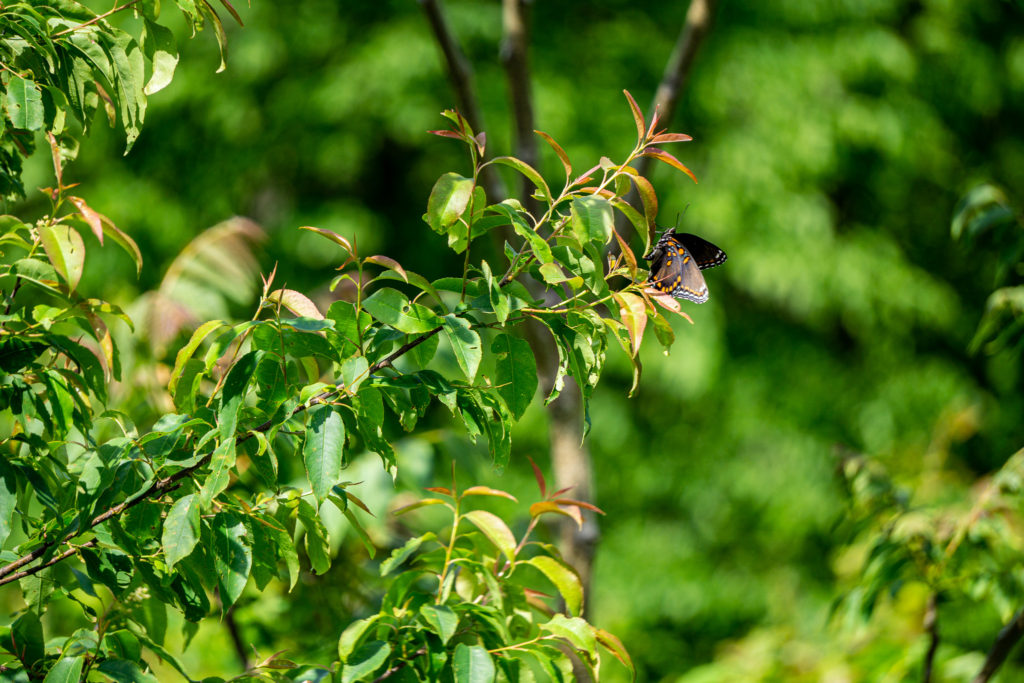
Additionally, other wildlife that can be found within the boundaries of Shenandoah National Park include:
- White-tailed deer
- Fox
- Coyote
- Eastern cottontail rabbit
- Raccoon
- Opossum
- Striped and spotted skunk
- River otter
- Beaver
- Woodchuck
- Red-tailed hawk
- Wild turkey
Never approach wildlife in the park, especially the bears. Maintain a safe distance if one is spotted, but never run from a bear — they will chase you. If camping or hiking, do not leave food and trash out in the open — store it safely and properly. Click here for more information on bear safety while visiting Shenandoah National Park.
Waterfalls
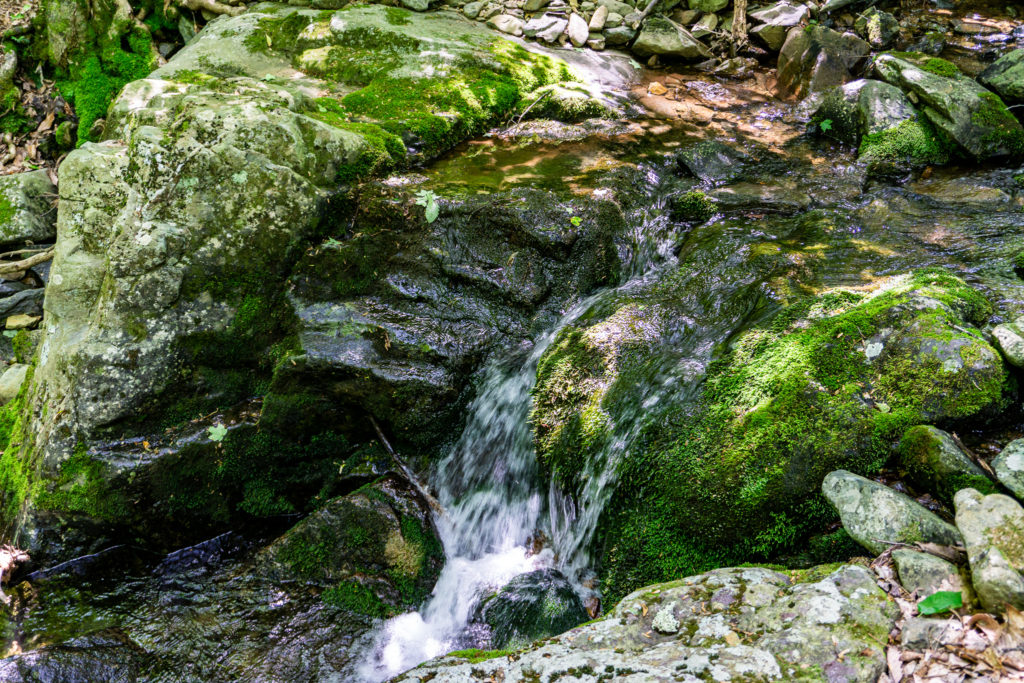
Virginia’s Shenandoah National Park has countless waterfalls for visitors to enjoy and explore.
Dark Hollow Falls
The most popular waterfall found in the park, Dark Hollow Falls is found at mile 50.7 — roughly the half-way point of Skyline Drive. This 70 foot-tall cascading waterfall is also the closest waterfall to Skyline Drive. The trail-head is located near the Byrd Visitor Center.
Overall Run
At 93 feet, Overall Run is the tallest waterfall in Shenandoah National Park. It is located at mile 21.1, with the parking lot situated just south of the Hogback Overlook.
Cedar Run
One of the more difficult waterfalls to access is Cedar Run. The trail leading to Cedar Run is 3.4 miles round trip with slightly rougher terrain. Additionally, swimming holes can be found along this trail for those looking to cool off if visiting during the summer heat.
Visiting Shenandoah National Park
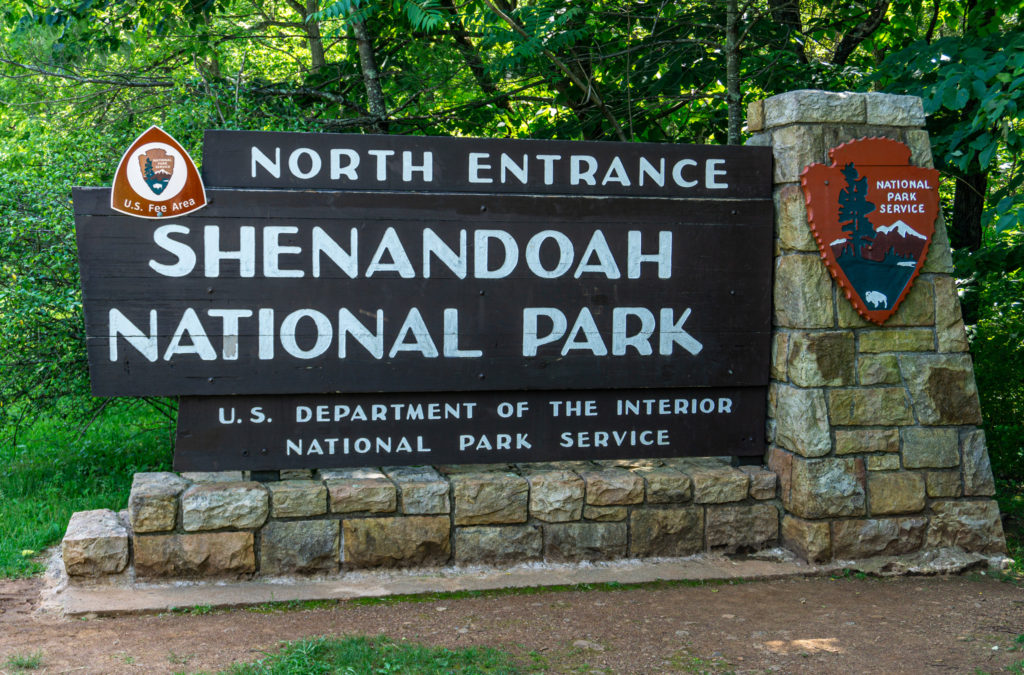
How to Get There
The park’s northern entrance at Front Royal is located 70 miles due west of the nation’s capital, Washington, DC, and is accessible via I-66 West. Access to the park is easily reachable from both the north and south via I-81.
Shenandoah National Park possesses four different entrance stations for those wishing to visit. Therefore, it is important to know which entrance would make the most sense for you to use when planning a visit.
Front Royal (North Entrance)
Shenandoah’s northern entrance is located near Front Royal, Virginia, off of Route 340. This road is also known as “Stonewall Jackson Highway.”
Thornton Gap
The park’s second entrance is found east of Luray, Virginia and west of Sperryville, Virginia, directly off of Highway 211 (Lee Highway).
Swift Run Gap
This is the only entrance to the park which has an actual physical address. You can enter the national park here at 22591 Spotswood Trail, Elkton, VA.
Rockfish Gap (South Entrance)
Finally, the park’s southern entrance is located just a few miles east of Waynesboro, Virginia, off of Highway 250.
Costs
The following entrance fees are applied to tourists visiting Shenandoah National Park:
- Single Vehicle – $30
- Single Motorcycle – $25
- Individual Person – $15
- Commercial Tour
- 1 to 6 Passengers – $25
- 7 to 15 Passengers – $75
- 16 to 25 Passengers – $100
- 26+ Passengers – $200
The entrance fees for single vehicles and motorcycles are good for a duration of seven days. In addition, annual vehicle passes can be purchased for $55.
Weather
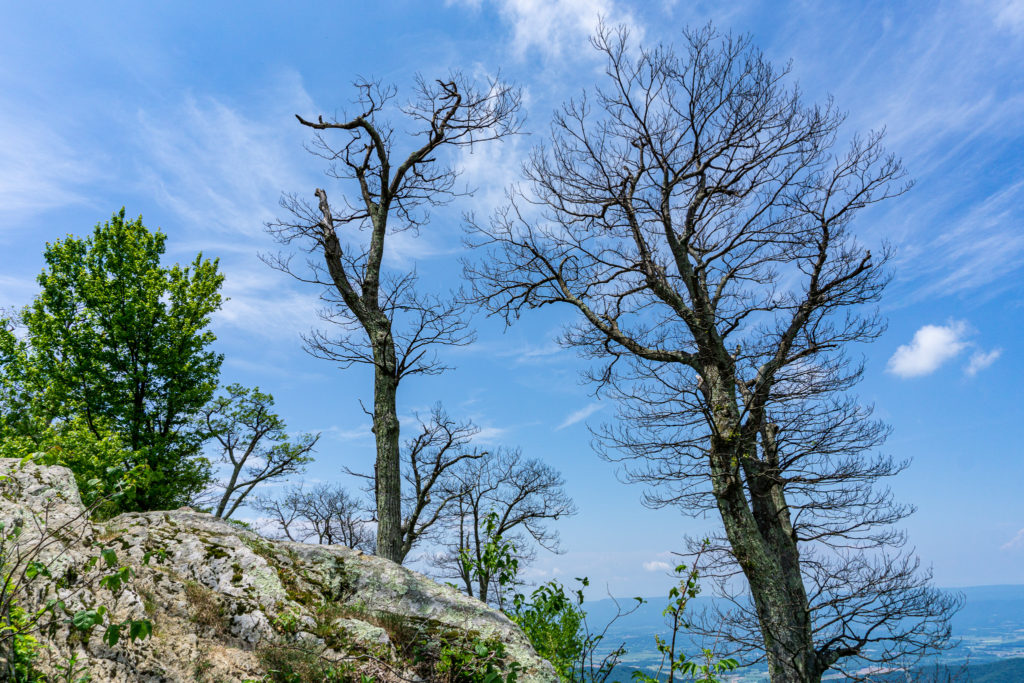
As with the rest of the northeastern United States, Shenandoah National Park experiences all four seasons (sometimes all in one day!) Summers are, more often than not, hot and humid. As a result, this can bring severe thunderstorms and torrential downpours without warning. Likewise, the same is true for the snow and ice in winter months. Therefore, regardless of what time of year you choose to visit, you should always be equipped with the appropriate gear and clothing.
Another useful tip is that the temperature up in the mountains is generally 10 degrees cooler than in the valley down below, so if you plan on tackling one of the hikes that gains elevation, plan accordingly!
Visitor Centers
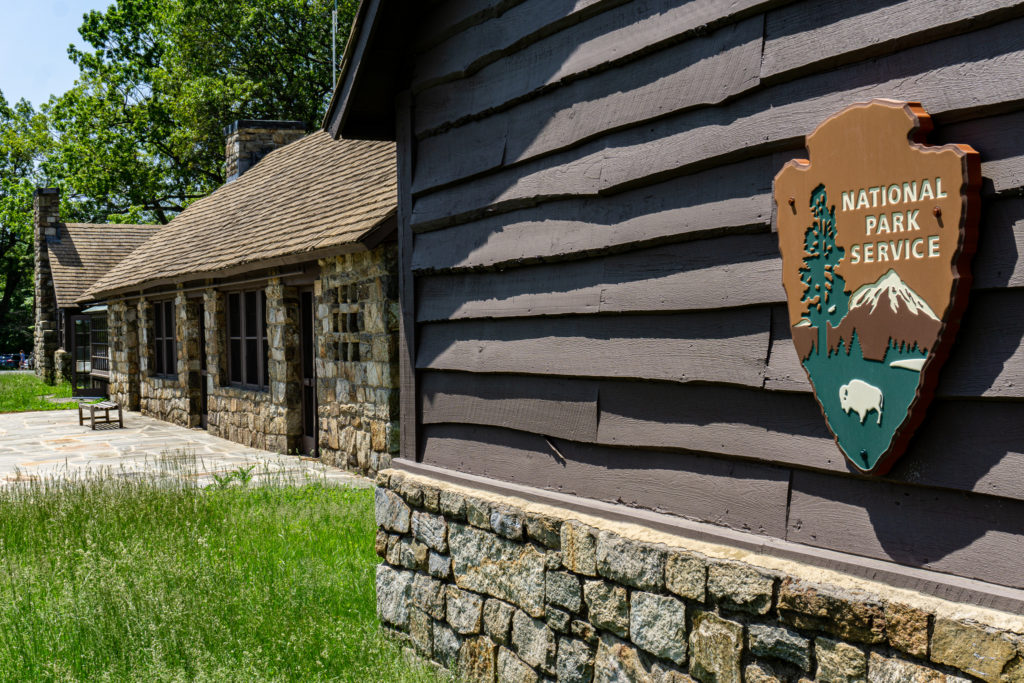
Shenandoah National Park has two visitor centers, both offering all of the basic amenities one would expect from a National Park Service visitor center, including:
- Restrooms
- Bookstore
- Exhibits
- Maps
- First Aid
- Information desk
- Back-country permits
Dickey Ridge Visitor Center
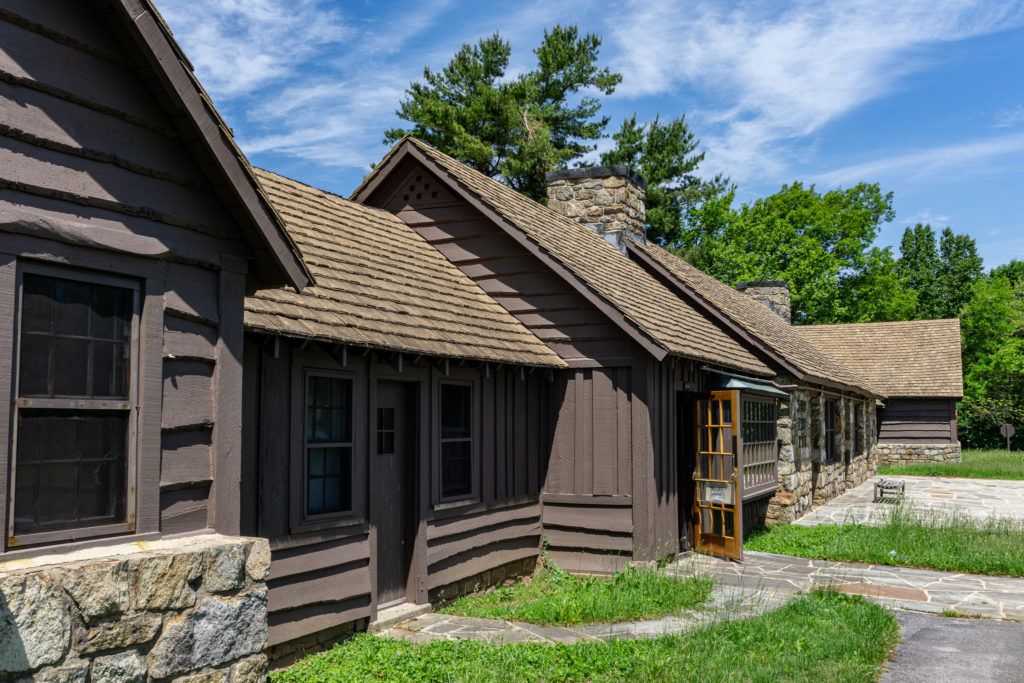
The Dickey Ridge Visitor Center is set at mile 4.6 of the Skyline Drive. The trail-head for Fox Hollow Trail is located just across Skyline Drive from this visitor center.
Harry F. Byrd, Sr. Visitor Center
Located at mile 51 on Skyline Drive, the Harry F. Byrd, Sr. Visitor Center is the second visitor center in Shenandoah National Park. It is situated across Skyline Drive from the Big Meadows Lodge.
Where to Stay
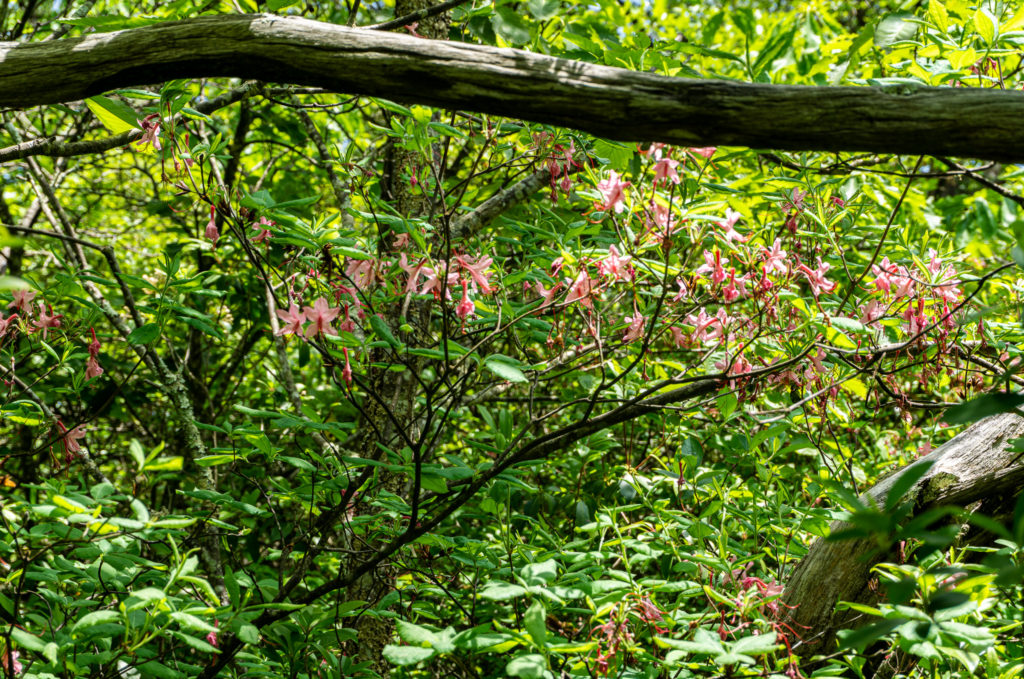
Shenandoah National Park offers several different options for those looking to extend their stay past just a day trip to the park, all with varying degrees of amenities and comfort. Therefore, it is important to choose one which meets your personal needs.
Big Meadows Lodge
Located at mile 51 on Skyline Drive, just across from the Dickey Ridge Visitor Center, Big Meadows Lodge has a main lodge with 25 rooms. 71 additional rooms are available among the other cabins and suites.
Skyland
Skyland is Shenandoah National Park’s premier accommodation option, housing 179 rooms, modern suites and multi-unit lodges. Furthermore, pets are welcome in select rooms at Skyland. Visitors can find Skyland at mile 41.7 on Skyline Drive.
Lewis Mountain Cabins
Found at mile 57.5, the Lewis Mountain Cabins is a series of quaint, rustic cabins which are completely furnished for guests.
Camping
In addition to its lodging options, Shenandoah National Park has four designated campsites for visitors to enjoy, which include:
- Matthews Arm Campground – Mile 22.1
- Big Meadows Campground – Mile 51.2
- Lewis Mountain Campground – Mile 57.5
- Loft Mountain Campground – Mile 79.5
Permits for back-country camping can be obtained at both visitor centers located within the park’s boundaries. Adequate planning is always needed for those wishing to back-country camp in Shenandoah. Never decide to back-country camp last minute, as this can be extremely dangerous for visitors who are ill-prepared.
Other Nearby National Park Service Sites
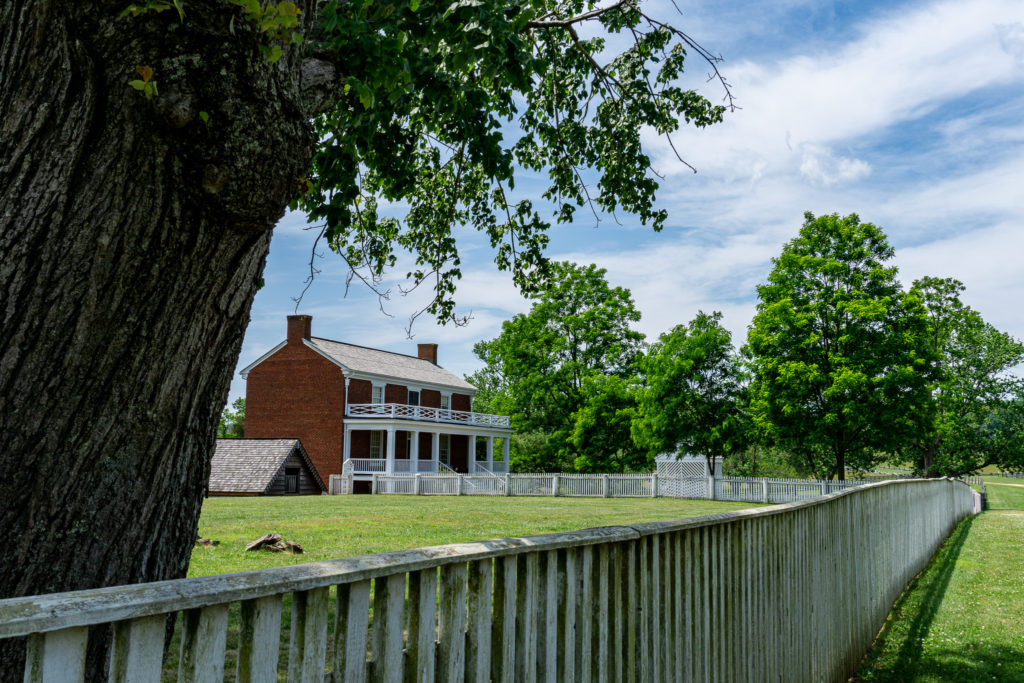
Virginia and the surrounding states are full of many other sites which are managed by the National Park Service. Therefore, it is easy to combine a trip to Shenandoah National Park with one or more of these other NPS Sites. This will make your trip to Virginia and the region even more enjoyable!
- Antietam National Battlefield (MD)
- Appalachian National Scenic Trail (VA & 13 Other States)
- Appomattox Court House National Historical Park (VA)
- Blue Ridge Parkway (VA & NC)
- C & O Canal National Historical Park (DC, MD & WV)
- Cedar Creek and Belle Grove National Historical Park (VA)
- Harpers Ferry National Historical Park (WV)
- Potomac Heritage National Scenic Trail (VA, MD, PA & DC)
Pin it:
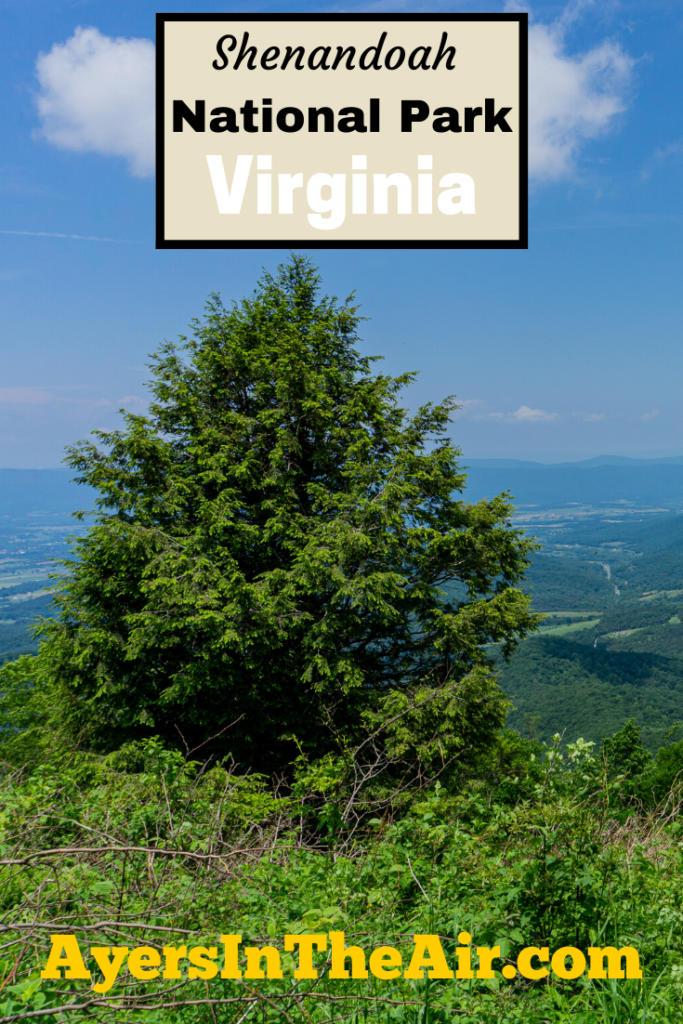
View the Complete List of US National Park Service Sites I’ve Visited!
